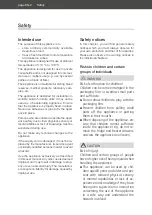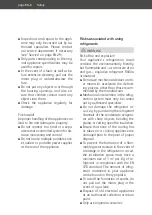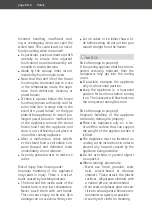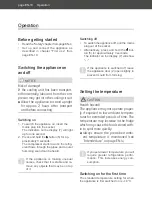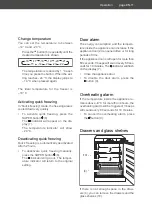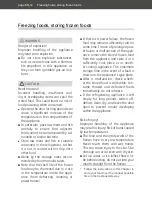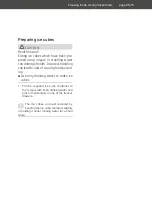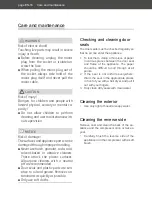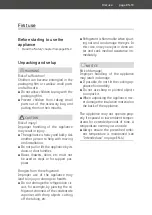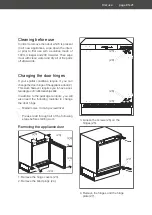
Safety
page EN-7
Health hazard!
Spurting refrigerant can damage the
eyes.
■
If refrigerant comes into contact with
the eyes or mucous membranes, im-
mediately flush eyes with clean water
and seek medical attention.
High concentrations of refrigerant va-
pour can cause dizziness, headaches,
nausea or asphyxiation.
■
Do not inhale refrigerant vapour.
■
Immediately air the room if refriger-
ant leaks.
Risks associated with chemical
substances
CAUTION
Danger of explosion!
Improper handling of chemical sub-
stances can lead to explosions.
■
Do not store explosive substances,
such as aerosol cans with a flamma-
ble propellant, in this appliance, as
they can form ignitable gas-air mix-
tures.
■
Never use defrosting sprays to de-
frost. They can generate explosive
gases.
Risk of fire and health hazard!
The thermal insulation and the interior
are scratch and heat-sensitive and can
melt or catch fire.
Plastics such as those used in thermal
insulation can release toxic fumes if
they melt or catch fire.
■
Do not use any electric heating equip-
ment, knives or devices with an open
flame such as candles.
■
Do not use electrical appliances in-
side the food storage compartments
of the appliance, unless they are of
the type recommended by the man-
ufacturer.
■
Keep the appliance away from open
flames and hot surfaces.
Risks in handling freezers
CAUTION
Health hazard!
Contaminated food can cause health
problems.
■
Opening the door for long periods can
cause a significant increase of the
temperature in the compartments of
the appliance.
■
Clean regularly surfaces that can
come in contact with food and acces-
sible drainage systems.
■
Store raw meat and fish in suitable
containers in the refrigerator, so that
it is not in contact with or drip onto
other food.
■
If the refrigerating appliance is left
empty for long periods, switch off,
defrost, clean, dry, and leave the door
open to prevent mould developing
within the appliance.
The appliance may not operate proper-
ly if the ambient temperature exceeds
or falls below the specified temperature
range for a prolonged period. This can
then lead to an increase in temperature
inside the appliance.
■
Always ensure the prescribed ambi-
ent temperature is maintained (see
“Intended use” on page EN-4).












